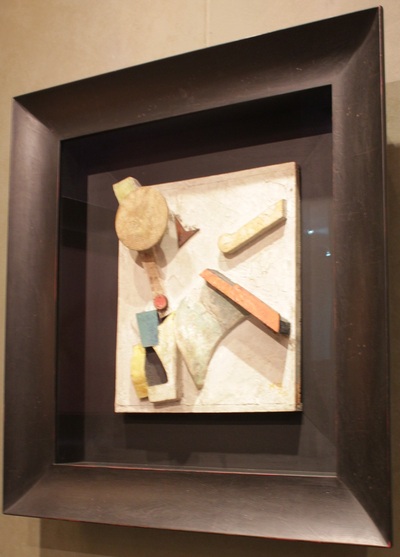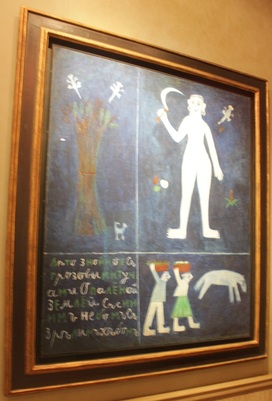
Larionov was a Russian (born in Moldova) who was a set designer, print maker, draughtsman, printer and, of course, painter. He was a major figure in avant-garde art in Russia before World War I. He was one of the two artists who developed "Rayonism," Russia's first abstract art. Larionov mostly remembered in the West for his work in Paris in the 20s and later.
Schwitters did so many different things in his artistic career it is awkward to list them all. He was a sculptor, painter, poet, sound artist, installation artist (before that term even existed) and, most famously, a collage creator. He was a German national who was prominent before the rise of Naziism. The Nazis considered his art "degenerate" and he fled to Norway in the late 30s. Ultimately he wound up in England (he was interned for some time).
His installation pieces included altered interiors of his family home in Hanover (Merzbau). There were a number of Merzbau (and a Merzbarn). Most do not survive.
Twombly created art that causes consternation; he was the great granddaddy of graffiti artists. He used words in his pieces which often are reminiscent of the scribbling of children. But there is a lot more to Twombly's work; they have tons of subtext for those who want to take the time to decode them. They are often just beautiful as well. He uses classical and modern reference as well as timeless human emotion in his work. Find out more, much more, about him at www.cytwombly.info.
Moholy-Nagy came to the USA from Hungary and started the New Bauhaus in 1937 but the school failed within a year. He then went on to found the school that would ultimately become the Illinois Institute of Technology. Throughout his career Moholy-Nagy was an advocate of bringing technology into the arts (and the arts into industry). This is not terribly shocking given his Bauhaus connections. He was a painter and photographer, often experimenting with photograms, photos exposed with object on top of the photo paper. Moholy-Nagy's philosophy on teaching art can be read in his book, The New Vision, from Material to Architecture. You can pick up a hardcover copy for around $1500.




 RSS Feed
RSS Feed